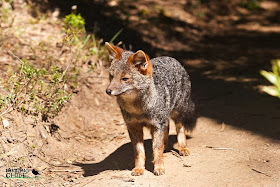Darwin's Fox or Darwin's Zorro is a little discriminatingly imperiled canine from the sort Lycalopex. It is otherwise called the Zorro Chilote or Zorro de Darwin in Spanish and lives on Chiloé Island and Nahuelbuta National Park in terrain Chile.darwin's fox was initially gathered from San Pedro Island off the bank of Chile by the naturalist Charles Darwin in 1834. It was long held that Darwin's fox was a subspecies of the South American ash fox be that as it may, the revelation of a little populace of Darwin's fox on the terrain in Nahuelbuta National Park in 1990 and resulting hereditary examination has elucidated the fox's status as an interesting species.in 2013 it was formally affirmed the vicinity of Darwin's fox at Oncol Park and the Valdivian Coastal Reserve.
In spite of the fact that chasing is conventionally performed alone, up to four people may think around a body for a couple of days. On Chiloé, these foxes additionally some of the time kill poultry and attack refuse dumps, and much enter houses during the evening in pursuit of sustenance, clearly unafraid of the individuals and mutts inside.
Chiloe, Darwin's Fox is found in a divided environment of waterfront sand rises blended with thick, evergreen woods, although, on the northern some piece of the island, the fox uses a generally even however divided scene of wide leaf woodland and dairy bovine pastures. Favored territory is old-development timberland, in spite of the fact that optional woodland and pastures and openings are likewise utili.
Darwin's Fox Animals
Darwin's Fox Animals



































